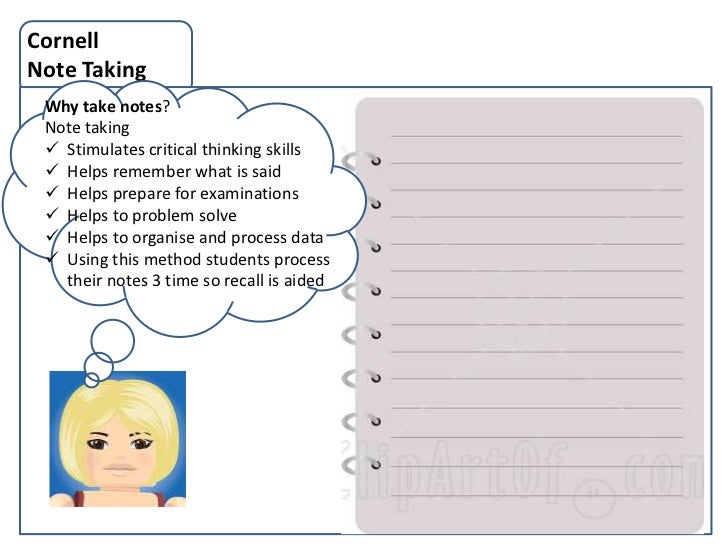

It goes back more than half a century and has been used (and often dropped) in many schools, including several in the Milwaukee area.Īt Brookfield East, where Lemberger is a junior, Cornell Notes is a key element of the education program - and a key, in the opinion of school leaders and many teachers, to why the already high-performing school has seen an uptick in overall student success in recent years.īrookfield East is a school where nearly 100% of students graduate and the vast majority go to college. She reviews the overall results, especially when she's preparing for tests. And, after a class or at the end of a unit, she writes in a box across the bottom of the sheet a reflection - basically, a summary of what she thinks she learned. In a column on the left side of the paper, she writes down questions or sometimes phrases that her main notes cover. In a typical instance, she takes those conventional notes within a box covering the upper right section of a sheet of paper and equal to about half the sheet. She doesn't use the usual approach (scribble for page after page, then promptly forget - I've been doing it all my life). Want to talk note-taking and other study tips with one of our Personal Education Consultants? Make a time to chat today.Naomi Lemberger says the way she takes notes in class helps things stick in her brain. The point is to understand.” – Albert Einstein. By revisiting your notes, you’ll gain greater insight into your topic, and you’ll more easily retain important dates, formulas and quotes. A suggestion is to create a schedule that factors in time for this each week. Revising your notes is what makes them useful in the first place. Try to strike a balance with length too short and it won’t make sense, too long, and it’s probably not worth doing. If you haven’t summarised your notes into dot points, have you really studied? This time-honoured study hack makes it easier to re-digest the information later on. Type your notes then to reinforce muscle memory, handwrite the summaries, scribble diagrams, and highlight to your heart’s content. Whichever option you find more effective and comfortable will likely work best. Others touch-type snippets on to their laptops. Some people retain information better through the physical act of putting pen to paper. This system relies on revision and interaction with your material.

Underneath, there’s room to provide a summary, answering the objective at the top. Bullet points, phrases, and lists help compress vital information into the small space. A smaller one on the left is where you’ll jot questions to consider later, while the larger one on the right is for you to paraphrase what you hear or read. The Cornell System suggests dividing your page into sections, popping the topic/objective and a question at the top, then creating two columns. The first step to successful note-taking is to find a format that works for you. Once you’ve made some notes, re-read them and discuss them with your friends, family and teachers. Copying things down word for word is a waste of time, where jotting essential information helps you to engage with it. Having a notebook handy helps us to retain far more, but only we use some note-taking smarts. It’s a scary thought that on average, we forget almost 40 per cent of what read or hear within 24 hours.


With a plan in place, you could be well on your way to great ATAR results. Taking notes is more than merely putting pen to paper. Highlighters, post-its and pencils, oh my! Note taking is an essential part of learning, at least until technology makes some pretty hi-tech advancements.


 0 kommentar(er)
0 kommentar(er)
